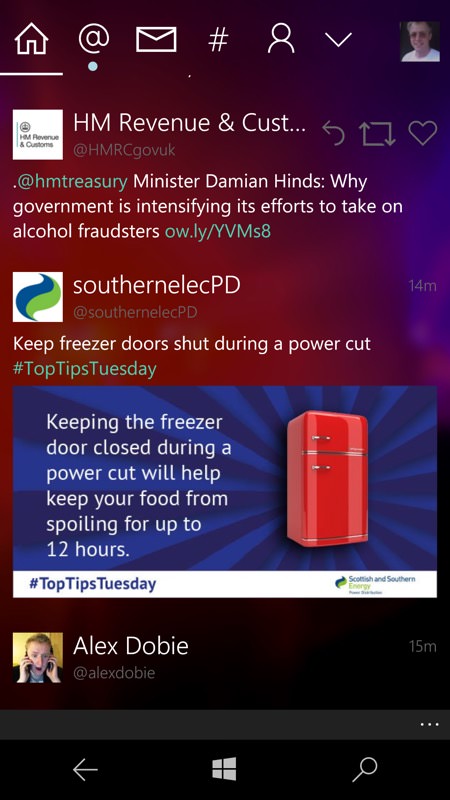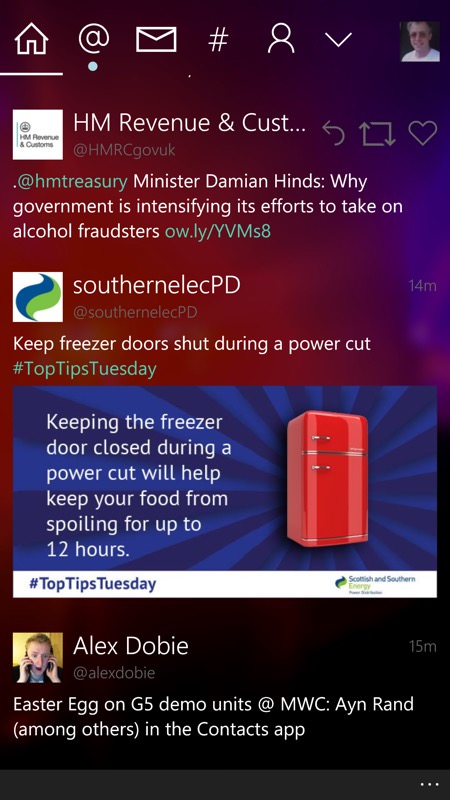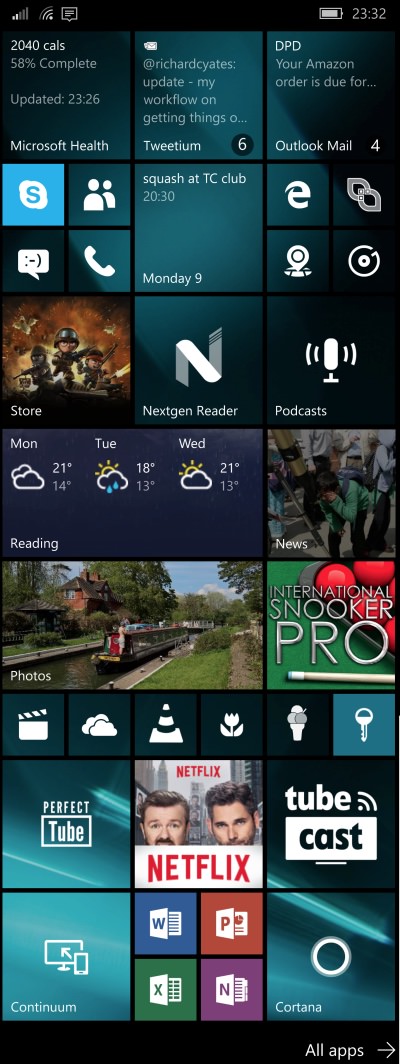Given the conclusions on the podcast, the short answer is that you can indeed do an awful lot on competing smartphones. But as Jason mentioned on the show, there are some unique selling points (USPs) that keep enthusiasts on Windows 10 Mobile - and even Windows Phone before it, for the real die hards(!)
Now, back in February I looked at 10 USPs of the Lumia 950 XL specifically, most of which were to do with the hardware. I'll list them here for brevity, but do see the original linked piece for the full explanation:
- Dropped phone or damage? Just replace the back
- No need to stay with plastic - go with leather or wood!
- Battery 18 months old and down on capacity? Just buy a new one.
- High Amplitude stereo microphones
- Oversampling camera
- Camera shutter button
- Triple LED flash
- Headphone jack
- Optional virtual controls
- Secure Windows!
Taken together, I argued that they provided quite a compelling case for choosing (or staying with) the Windows 10 Mobile-powered Lumia 950 XL.
Now, the last two are software related and are worth expanding on - and adding to - here. In fact, with the 'Why Windows?' question highlighted, I'm going to start a new device-independent list and include those two to get started.
1. Virtual controls (typically 'back', 'home' and 'multitasking'/'search') were something that came in a couple of years ago in the phone world, yet Microsoft is virtually alone in providing a way to swipe the controls away when you want to work in an application with the maximum amount of screen real estate. The system works really well and it's genuinely frustrating on some Android phones when you try various swipes to dismiss these controls and find that they're fixed in place most of the time and that you have to live with them.


2. Security. The last in the original list is subtle but very important. In the last year alone we've seen numerous Android-targetting malware strains (often delivered by applications or games from the Play Store - at least temporarily, until Google pulled them), plus various Android vulnerabilities revealed - which Google has patched, but few of these fixes will make their way into end user hands in the mainstream. Then there's malware and ransomware targetting x86 versions of Windows which, in the case of old and unsupported versions (e.g. XP) can cause havoc, as we say last week with the Wanna Cry outbreak and the closure of hospitals and infrastructure around the world.
Which is not to try and scare anyone unduly, but it's certainly food for thought. Windows 10 Mobile (and Windows Phone before it) presents a far smaller attack surface for malicious entities online, by virtue of a much smaller installed base than iOS or Android.
3. Live tiles, again as referred to in the podcast. Every single time I do a comparison photo of a Windows Phone/Windows 10 Mobile device besides an Android phone or iPhone, it's apparent, almost embarrassingly so, that the live tiles approach used by Microsoft provides the most information-rich homescreens of any mobile OS, and by a country mile.

Click/tap this image for the full vertical panorama/Start screen example!
Now admittedly live tiles don't always behave - they're updated in the background on various schedules and, well, this is Windows so the idea of everything working all the time is a little unrealistic(!) But most live tile set-ups work most of the time and that's good enough. From a preview of upcoming Calendar appointments to highlighted tweets to favourite photos to currently playing podcasts, they're all to be found on a Windows-powered phone's Start screen. And that's a genuine USP.
4. Familiarity. Having the same applications as are running on your laptop or tablet or whatever is surprisingly pleasing. Now, on the desktop PC you may not run that many UWP applications (a lot is usually done via either a web browser or x86 apps), but as you move down in screen size and especially as you move to 'touch' (e.g. on the 'Surface' range of hybrids), then the UWP applications make a lot of sense. And you already know the UI, the interface, where everything is because it's the exact same app as is running on your Windows 10 Mobile phone.

5. Beauty. Now this is 'in the eye of the beholder' and obviously somewhat subjective, but I find the interface of most (though not all) UWP applications for Windows 10 particularly striking on the phone and especially with a dark theme enabled on an AMOLED-screened phone. So on the Lumia 930, 950, 950 XL and Elite x3, for example. The fonts used, the slender artwork for control icons, all set against a suitably dark and inky background.
Or maybe that's just me? Admittedly, the fonts aren't 100% consistent across all applications and some apps go totally their own way, but I'm happy enough most of the time.
Also in this section I'd point out the elegant way that almost all UWP applications for Windows 10 Mobile gracefully transform their UIs when the phone is rotated from portrait to landscape. The effect and usefulness (or not) is often surprising - extra views and options in some cases.
6. Continuum. I have to mention this as a USP, of course (you can safely ignore Samsung's DeX kludge here). Having said that UWP applications for Windows 10 adapt to orientation, they also adapt on the whole to being plugged into a much larger secondary display, as we've seen with hundreds of very good Continuum-aware titles in the last year.
(It's true that Continuum can be a bit of a faff in terms of cabling and adapters - the Elite x3 Lap Dock was the closest to a really useful solution, but that was flawed on first release - and we're still waiting for a fixed-up version... My suspicion is that Continuum will come into its own with Windows 10 on ARM on ultra-portable PCs in 2018.)
For companies, there are extra reasons, of course. Ease of configuration and management by an IT department, great VPN options, and so on.
_______
Add all of this up and you might wonder why the world and its dog hasn't beaten a path to Windows 10 Mobile's door. Most of the blame lies with Microsoft, as I've already analysed at length. In fact, add in that Microsoft could have, and should have, done a lot more to 'woo' companies which hadn't shown willingness to develop for Windows 10.
The end result of lack of investment and attention has been the current retrenchment from the market and all the USPs just mentioned are outweighed in many people's eyes by lack of a number of mainstream consumer favourite applications and by a lack of shiny new hardware to run all this on.
Still, next time someone asks "Why bother with Windows 10 Mobile?" then at least you've got a page (here) to link them back to!
